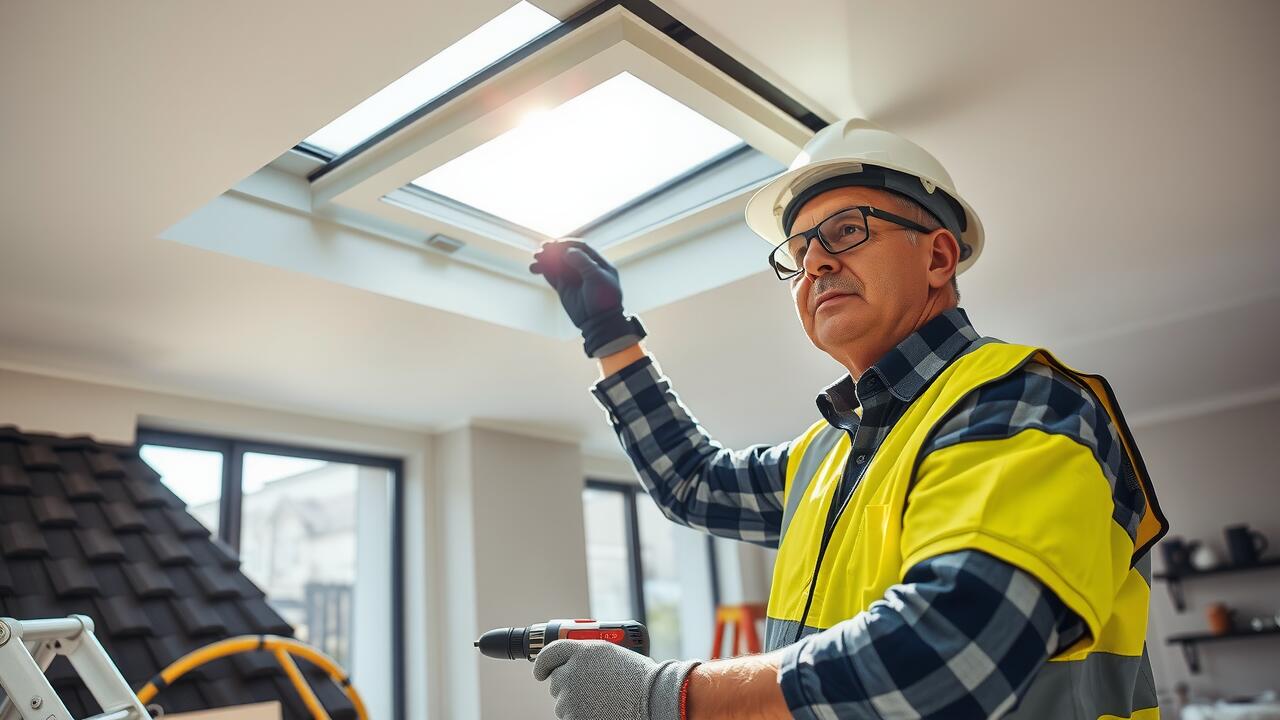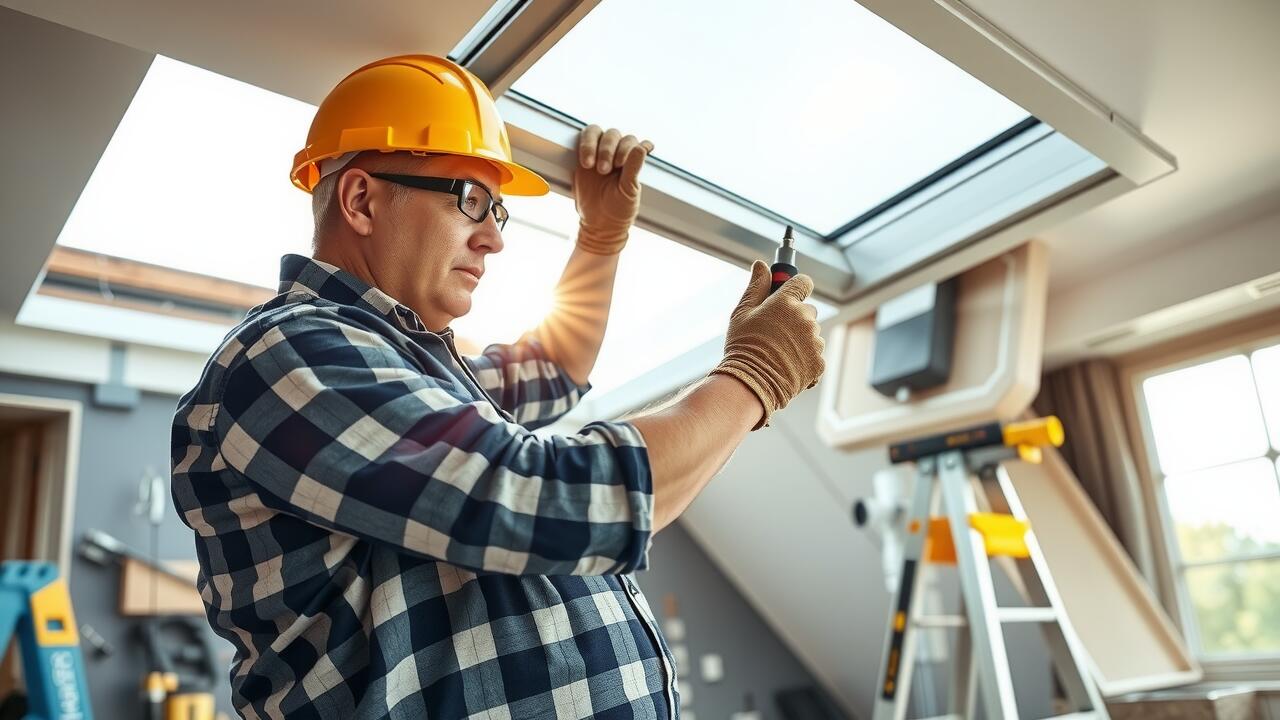
Permits and Regulations
When considering a skylight replacement, understanding local building codes and regulations is crucial for homeowners. Many municipalities require permits for installing or replacing skylights to ensure compliance with safety standards. Regulations can vary significantly based on location, so it is advisable to contact local authorities or consult a professional to navigate this process effectively. Failure to obtain the necessary permits can result in fines or complications when selling your home later on.
In addition to permits, factors such as zoning laws and homeowner association rules may also influence skylight replacement projects. Homeowners should be aware of any restrictions related to design, size, or placement of the skylight that may apply in their area. It is essential to ensure that the planned installation meets all legal requirements to avoid delays or additional costs down the line. Understanding these regulations will ultimately support a smoother and more compliant skylight replacement experience.
Understanding Local Building Codes
Local building codes play a crucial role in the skylight replacement process. These regulations vary by municipality, with specific requirements regarding installation, structural integrity, and ventilation. Homeowners must be aware of the laws governing skylights to ensure compliance, which can impact safety and long-term functionality. Consultation with local authorities or building inspectors is essential for obtaining pertinent information and documentation.
Understanding the requirements not only influences the costs of skylight replacement but also determines whether any permits are necessary for the project. In many cases, failing to adhere to local building codes can lead to fines or the need for costly modifications. Engaging a professional familiar with local regulations can help streamline the replacement process while ensuring that all necessary legal standards are met.
Impact of Skylight Size on Costs
The size of the skylight plays a crucial role in determining the overall cost of replacement. Larger skylights typically require more materials, such as glass and frame components, which can increase both the price of the skylight itself and the installation costs. Additionally, larger openings in the roof may require more structural modifications to ensure proper support. Depending on the complexity of these modifications, costs can quickly escalate.
Measuring accurately for a skylight replacement is essential for achieving the best fit and performance. The dimensions of the existing opening will influence not only the price of the new skylight but also the installation charges due to potential changes in roof structure. Homeowners should consider that irregularly sized or custom-shaped skylights usually come with a higher price tag, as these options often demand specialized manufacturing and installation processes.
Measuring for Replacement
When considering skylight replacement, precise measurements are critical to ensure a proper fit and seamless integration with your existing roofing structure. Begin by carefully measuring the width and length of the current skylight, accounting for the frame and any structural elements surrounding it. It is advisable to have a second set of eyes during this process, as even slight deviations in measurement can lead to errors in installation and potential water leakage issues.
In addition to measuring the existing skylight, it is essential to understand how the surrounding area might impact the installation. Factors such as roof slope, insulation, and ventilation need to be assessed. These variables can influence the choice of materials and potentially impact the overall cost of the skylight replacement. Evaluating these aspects early on can help in making informed decisions regarding the replacement process.
Warranties and Insurance Considerations
When contemplating skylight replacement, it is essential to consider the warranties offered by both manufacturers and contractors. These warranties can vary significantly in terms of coverage duration and specific conditions. Some manufacturers provide limited lifetime warranties on the skylight itself, while labour warranties may cover installation for a certain number of years. Understanding the details of these warranties can help homeowners gain confidence in their investment and protect against potential future issues related to faulty materials or improper installation.
Insurance considerations also play a crucial role in the decision-making process for skylight replacement. Depending on the specific circumstances, homeowners might find that their current homeowner’s insurance policy covers some aspects of the replacement cost, particularly if previous damage has occurred. It is advisable to check with the insurance provider to clarify these details and determine whether the skylight replacement will impact premiums or coverage. Being well-informed about these factors can help homeowners navigate the financial implications and ensure sufficient protection for their property.
Factors Affecting Long-term Costs
When considering the long-term costs associated with skylight replacement, various factors come into play. The quality of materials used during installation significantly impacts the lifespan and durability of the skylight. Higher-quality frames and glass can lead to greater energy efficiency, thus reducing heating and cooling costs over time. Additionally, consider the local climate, as extreme weather conditions can affect the performance and maintenance needs of the skylight.
Another important aspect is the potential for leaks or moisture issues. If a skylight isn’t properly installed or maintained, it may lead to water damage, which can incur substantial repair costs. Regular maintenance can mitigate these risks, but this also requires time and financial investment. Lastly, the choice of roofing materials around the skylight can influence long-term durability and performance, highlighting the need for thorough planning in any skylight replacement project.
FAQS
What is the average cost to replace a skylight in Canada?
The average cost to replace a skylight in Canada typically ranges from $1,000 to $3,000, depending on the size, type, and installation complexity.
Do I need a permit to replace my skylight?
Yes, in most cases, you will need a permit to replace your skylight. It’s important to check with your local building department to understand the specific regulations and requirements in your area.
How does the size of the skylight impact the replacement cost?
The size of the skylight significantly affects the replacement cost. Larger skylights generally require more materials and labour, leading to higher overall costs.
Are there warranties available for new skylights?
Yes, many manufacturers offer warranties for new skylights, which can cover defects and other issues for a specific period. It’s advisable to review the warranty details before making a purchase.
What factors should I consider for long-term costs associated with skylight replacement?
Long-term costs may include maintenance, potential energy savings, insurance premiums, and the lifespan of the skylight. Energy-efficient models may reduce heating and cooling costs over time.
